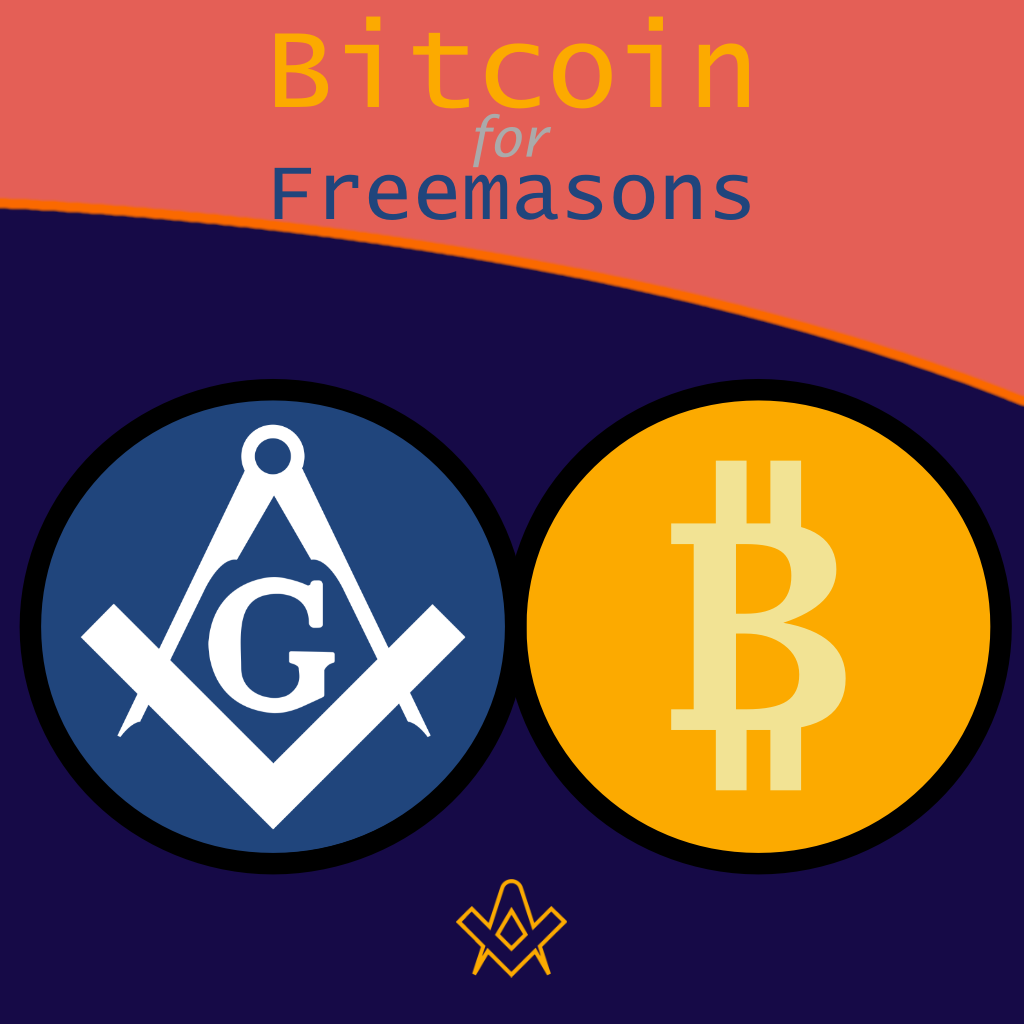All industries have fought off digital, and many have lost that resistance; they all think digital is not going to affect their business model.
In the first quarter of the 21st century, digital is eating the analogue world, one byte at a time. Music, books, photography, TV, news, communications, education, shopping, tax etc.
The content has not changed – just the packaging.
The current global battle being fought right now is money. We are living in an age where analogue money is being transformed into digital money, and the analogue business model is dead.
Bitcoin is replacing all forms of analogue money. You may not agree with that statement. You may not understand that statement. Nevertheless, it is happening now.
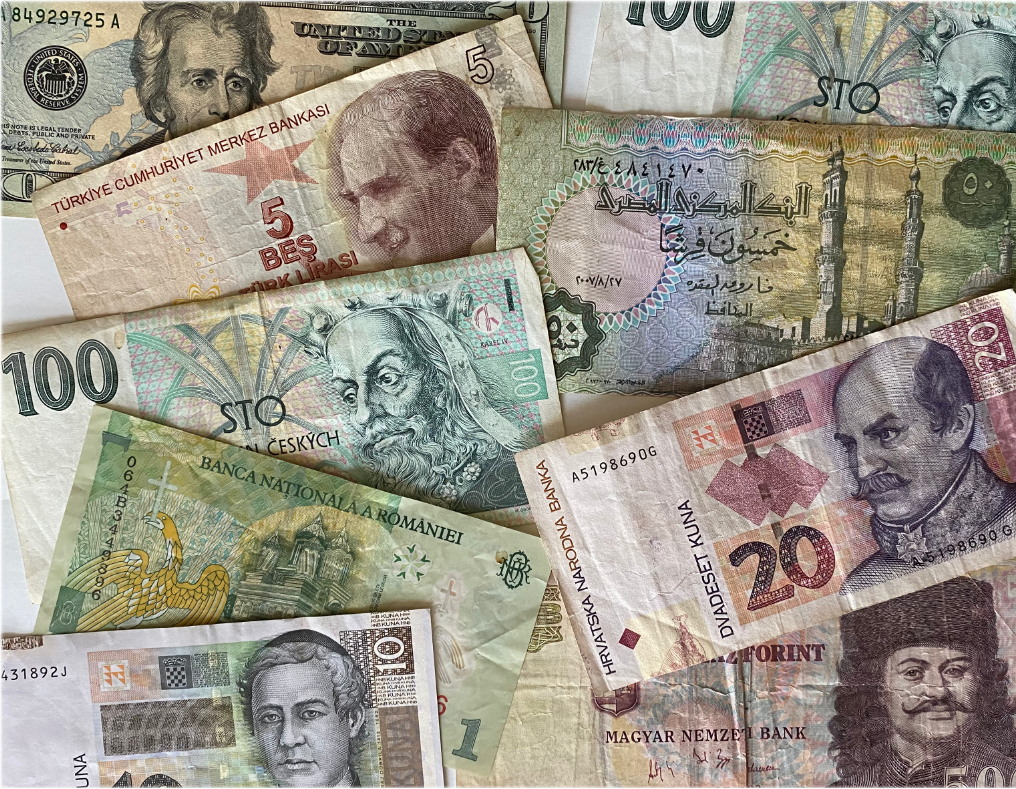
Bank Notes
IMAGE CREDIT: The Square – author’s Collection
I will accept that some existing analogue currency bank notes and coins will be saved as collectables, and collectables can be exchanged for money, but on a micro scale.
This article will look at Bitcoin as a digital money replacement to existing analogue or fiat money.
Last month, The Square published an article ‘Citizen Step 1‘, which looks at how we could interoperate the symbolism of the Entered Apprentice working tools, to be a better citizen of the world.
For those Freemasons who do not understand Bitcoin, or those who reject the concept of Bitcoin, this article will put those three working tools to the test. Or more specifically, you as a Freemason, being able to work with these working tools.
24-inch gauge – time management – you are asked to allocate some of your 24 hours to reading through this article.
Common gavel – open mindset – you are asked to try to comprehend a new concept without agreeing with it.
Chisel – a daily advancement in knowledge – having read through this article, you are invited to undertake some addition research to extent your knowledge in Bitcoin and digital money.
Similarities of Bitcoin to Freemasonry
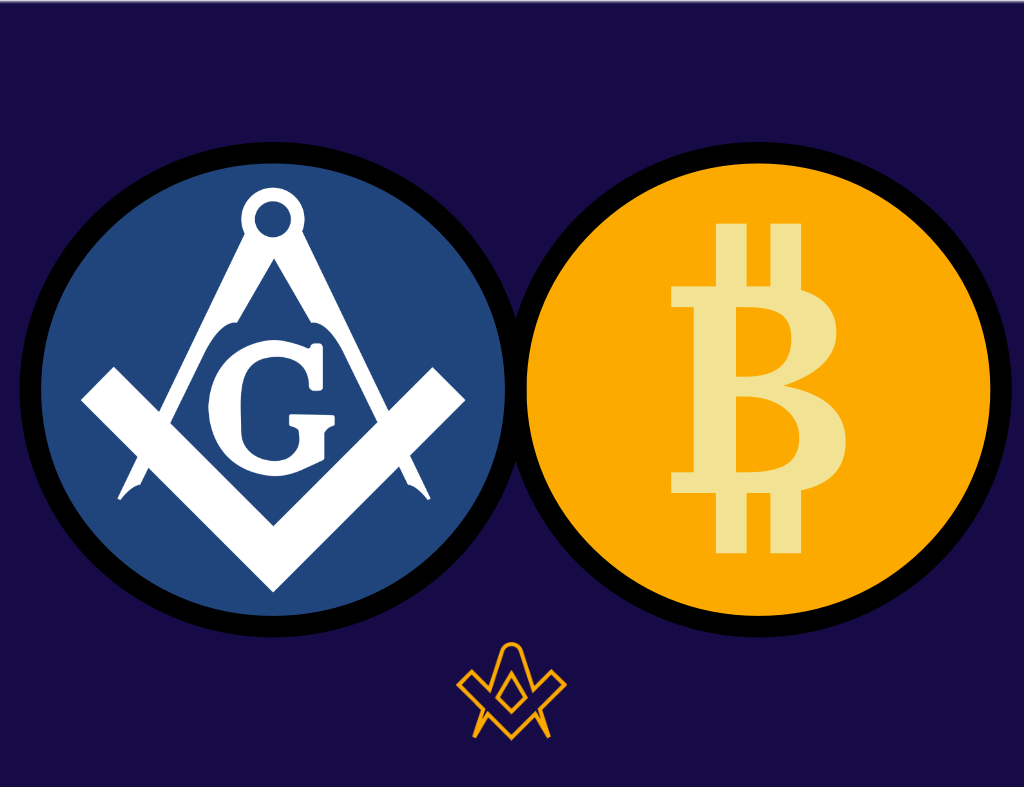
For people not invested, there are a lot of similarities between Bitcoin and Freemasonry.
The first is that both are rejected by those to do not understand them. There is a lot of FUD (Fear, Uncertainty, Doubt) written about the topics by people who have ‘no skin in the game’, i.e., don’t hold Bitcoin, or who are not Freemasons.
Mainstream media prefers sensationalised negative click bait headlines on both topics than to print facts. There is no news in reporting the boring facts.
Both are opensource protocols – no one person or company controls them. The creator of both are unknown.
To the uniformed, they think Bitcoin and Freemasonry are about getting rich.
if freemasonry is about:
being a better citizen of the world
then Bitcoin is about:
making the world a better place for all citizens
The author is both a Freemason and a Bitcoiner. A Freemason since January 1989, and a Bitcoiner since April 2017, he has spent in excess of 200 hours researching both topics.
Bitcoin Ideology
The ideology behind Bitcoin is: fix the money, fix the world.
Bitcoin was first defined in a white paper published on 31 October 2008, written by an unknown person, or group of people, using the name Satoshi Nakamoto.
This is a pseudonym and the person’s identity is unknown.

The first transaction block, also called the Genesis Block, is recorded on 3 January 2009, which contains the phrase taken from The Times newspaper, ‘Chancellor on brink of second bailout for banks‘. This embedded text in the Genesis Block, the first block provides a time line, plus sets the ideology behind Bitcoin.
For those who remember the global financial crash of 2008, will remember it was due to a small number of employees at large banks who crashed the world financial system.
The film ‘The Big Short‘ is a documentary drama, walking through the process which lead to the financial crash.
The ideology behind Bitcoin is to remove all central controls from money – to separate money from State. No one person or group, or Government, controls Bitcoin. Anyone can exchange their money for Bitcoin.
If gold was the first universal peoples’ money, Bitcoin is the first universal peoples’ digital money.

Gold (and silver) coins were used as a medium of exchange, but due to its bulk, gold was difficult to transact large sums.
It being physical, know as a bearer asset, it was prone to be stolen during transit. Bank notes were then introduced to solve the weight issue, then later cheques, now we have electronic bank transfers.
In terms of money, gold is considered a reserve assist, or a hedge against inflation.
Bitcoin technology (which will be discussed later) allows anyone in the world, with access to a smartphone and the internet, to enjoy online banking services.
To the western world this might not appear to be of any benefit. But of the 7.9 billion inhabitants, there are still over 1/3 of the world’s population unbanked. Bitcoin technology bridges that gap.
USA Government Confiscated USA Citizens’ Gold

In 1933, the USA Government made it illegal for USA citizens to hold gold
IMAGE LINKED: wikimedia Attribution 4.0 International (CC BY 4.0)
In 1933, the USA Government made it illegal for USA citizens to hold gold. It is possible that physical assets can be confiscated.
During times of conflict, Freemasonry has been censured; the physical property of Freemasons, and Masonic instructions, being ceased and in some case destroyed.
But Freemasonry, the pure content of Freemasonry is not physical, but stored in the human mind and soul, and cannot be confiscated. Freemasonry is spread around the world, and though there may be certain territories that currently prohibit the practice of Freemasonry, it cannot be censured.
Bitcoin is not a physical asset, it is just text in a file secured by more text. As long as the password is kept secure, it is not possible for any one to confiscate Bitcoin.
Likewise, if the password is permanently lost, access to the Bitcoin is also permanently lost. There is no help desk or back door to regain access.
Bitcoin Technology
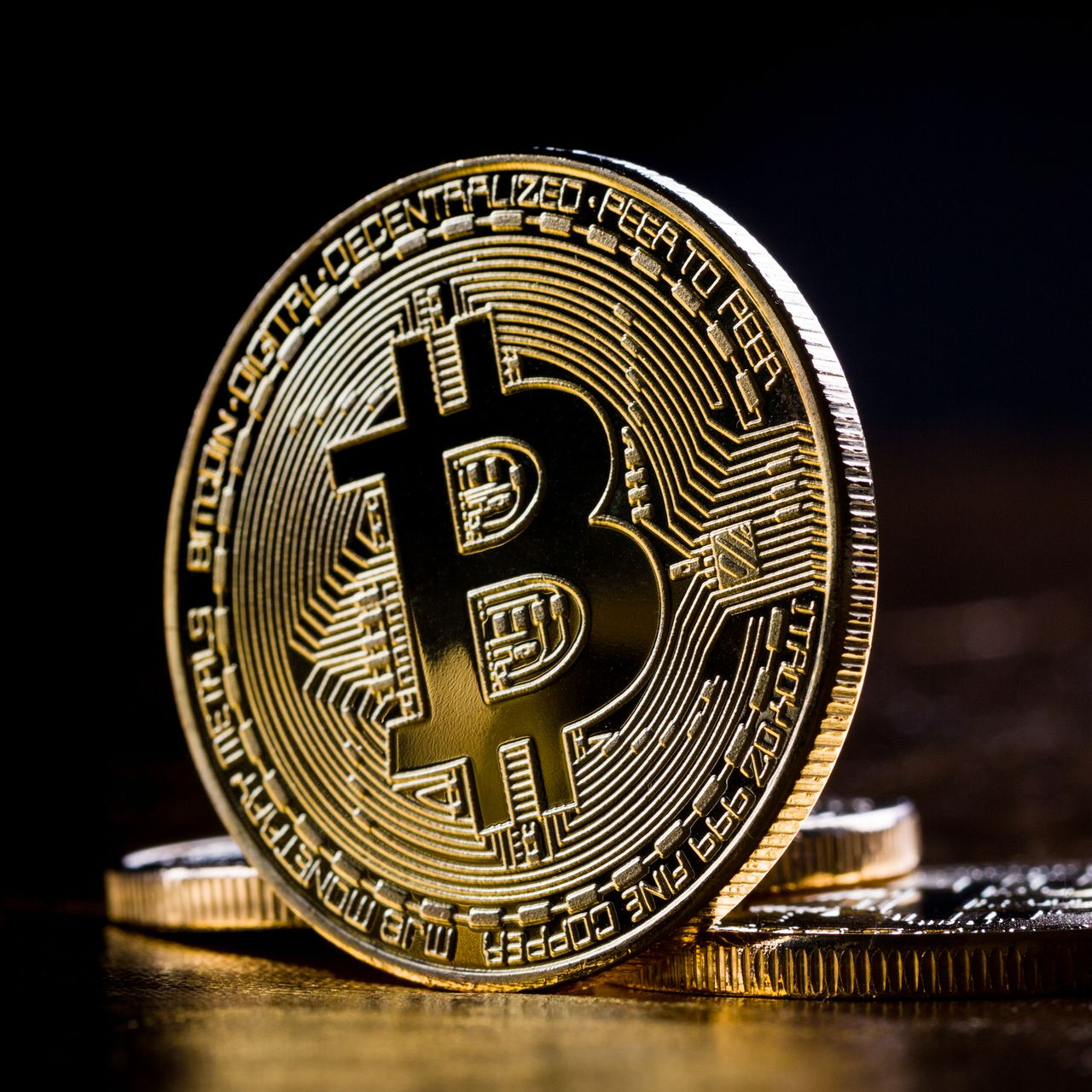
For those Freemasons who do not understand the technology behind Bitcoin, This section will provide a brief overview on Bitcoin Technology as it has evolved.
What is a Bitcoin? A Bitcoin is a string of text recorded in a file. You might see images of gold coloured coins, these images are used just for illustration. Bitcoin has no physical presence.
The Bitcoin software provides two main functions. First, the means to transfer Bitcoin from one person to another, and second, to control the issue of new Bitcoins into existence.
First – the means to transfer. To hold Bitcoin the person needs a ‘Wallet’. A Wallet is software that has a unique string of text, the ‘Wallet Address’, plus a series of passwords.
A person can only transfer Bitcoin from their own wallet address to another wallet address by using a password. This password is 256 bits long. A bit is either a 1 or 0.
A string of 256 makes it almost impossible to guess a password, which makes Bitcoin a very safe form of storage.
See SHA256 for a full technical explanation.

Bitcoin miner computers
All transactions waiting to be confirmed are held in a memory pool. At about 10 minute intervals, the transactions in the memory pool are verified by one random computer (a miner) in the Bitcoin network.
Currently there are tens of thousands of computer miners on the network. The randomly selected computer verifies: first, that there is sufficient Bitcoin in the sender’s wallet address, and second, that the sender’s password is correct.
If both are true, the transaction is written to a block of transactions. This block of transactions is then available to other computers (‘validating nodes’) who randomly verify that all the transactions are correct.
There are hundreds of thousands of these validating nodes computers across the globe. The new block of transactions are added to the blockchain database file.
Every validating node and miner holds their own exact same copy of the blockchain.
Bitcoin transactions are held in a public distributed blockchain which means no one person or Government can ban, block, or control Bitcoin.
The second function – to control the issue of new Bitcoins into existence.
Bitcoin is controlled by maths. And while 2 + 2 = 4, then this remain secure.
There will only ever be 21million Bitcoin in existence. Each Bitcoin is subdivided by 100 million parts we call ‘Sats’ or ‘Satoshis’. It is possible to purchase parts of a Bitcoin down to 100 millionth of a whole. The finial part (a Satoshi) of the last Bitcoin to be brought into existence with be in the year 2140.
It works like this:
Every four years the number of Bitcoin brought into existence is halved. It started with 50 Bitcoin every 10 minutes for the first four years, then halved to 25 Bitcoin every 10 mins for the next four years, then halved to 12.5, and until 2024 there are 6.25 new Bitcoin every 10 mins. This halving continues until 2140.
Of the 21 million maximum Bitcoin, 19 million have already been produced, so there are less than 2 million left to be made until 2140.
Each time the new block of transactions are recorded to the blockchain, the computer which made that new block is rewarded with the new Bitcoin, currently 6.25. This is called the block reward. In addition to the Block reward, the computer also receives the transaction fees.
I would add, that every four weeks or so, the software automatically checks that the average time to create a new block is 10 minutes. This time interval can change if more computers undertake the mining, or the computer technology improves. There is a difficulty adjustment, which ensures that there is a new block every 10 minutes over a four-week period.
Therefore no matter the price of Bitcoin, no matter if the number of computers competing to mine blocks, or if the computation power increases significantly, the programmed amount of new Bitcoin does not alter. Bitcoin is a scares asset, backed by maths.
The important takeaways
There will only ever be 21 million Bitcoin, of which 19 million have been brought into existence.
Bitcoin is a string of text, there is nothing physical.
The computer selected to write the next block of transactions is totally random, so no one can write false transactions. If they do, their block of transactions will not be validated and they lose out on the block rewards and transaction fees.
The Bitcoin miners and validation nodes are located around the globe, and each holds a full copy of the blockchain transactions, so no Government can ban Bitcoin. And no bad actor can control Bitcoin.
There have been many people and organisations set about to attack Bitcoin which have all failed. These attacks continue as the value of Bitcoin increases, which only goes to prove the security.
Bitcoin Energy FUD
Like Freemasonry, Bitcoin is similarly bombarded by false accusations by people who fear it, but are not willing to understand it.
Bitcoin is boiling the oceans
Freemasons control the world

One of the continuous criticisms levelled at Bitcoin, is the amount of energy consumed by the computers to secure the monetary network – the Bitcoin Miners.
Lets start with some figures. BP report cited in the Bitcoin Mining Council presentation, estimate that that global amount of electricity generated on the grid by national generators = 154,750 TWh
It is not possible to calculate electricity not generated on the grid such a home solar power systems of other small private sources.
The Bitcoin network monitors the amount of computing power on the network which can be translated in to energy usage = to be 220 TWh
The calculations show less than 0.14% is used by the Bitcoin Network to secure the global monetary system.
The energy industry estimates that 50,000 TWh of power generated at source is lost in transmission before it gets to the consumer.
Source: Bitcoin Mining Council
Energy cost is the largest operational expense for the Bitcoin mining industry. So, generally the organisation operating the Bitcoin miners, are continually looking for lower cost energy supply. It is estimated that currently 60% of electrically comes from the grid. The other 40% is either stranded electricity or off-grid renewable power source.
The trend is to continually use stranded energy and renewable energy sources.
The Bitcoin mining operations that currently use the grid to power their equipment are used by the power companies to balance load.
This helps the power companies to respond to short term load spikes. In situations when the load on the grid spikes, i.e. the retail use increases, the power grid energy generator can reduce the power to the Bitcoin mining operations and direct it to the retail users.
Then as the retail users reduce their requirements, the load shifts back to the Bitcoin miners. The Bitcoin mining operations are able to tolerate the sudden power cuts, and in return get their power at a reduced rate.
May 2022 Energy FUD update

Letter to:
The Honorable Michael S. Regan Administrator
United States Environmental Protection Agency 1200 Pennsylvania Avenue, N.W. Washington, D.C. 20460
From: Jared Huffman Congress of the United States House of Representatives
We write to request that the Environmental Protection Agency (EPA) ensure cryptocurrency mining facilities are not violating foundational environmental statutes like the Clean Air Act or the Clean Water Act. We have serious concerns regarding reports that cryptocurrency facilities across the country are polluting communities and are having an outsized contribution to greenhouse gas emissions. As cryptocurrency gains popularity, it is essential to understand the environmental risks and pollution associated with this industry.
The Bitcoin Mining Council’s response in a letter to The Honorable Michael S. Regan
The statement above unfortunately confuses datacenters with power generation facilities. Power generation facilities are not datacenters. Datacenters which contain “Bitcoin miners” are no different than datacenters owned and operated by Amazon, Apple, Google, Meta, and Microsoft.
Enough is Enough

enough is enough
IMAGE CREDIT: ugly Attribution 4.0 International (CC BY 4.0)
Unfounded attacks by third parties is not a surprise to Freemasons
In 2018 when the Guardian newspaper ( London, England ) published a series of inflammatory attack articles and opinion pieces making false accusations, Dr David Staples Grand Secretary UGLE quickly responded.
Multiple news sites quickly began to reprint parts of the story, and embellish it on their own.
Knowing full well that any news outlet would do no more than selectively quote any letter or press release, UGLE followed up Staples’ response to the Guardian and other news outlets with full page advertisements in the Telegraph, the Times and other major papers in England, declaring ‘Enough Is Enough.’
The hashtag #EnoughIsEnough quickly spread among members.
Over a period of time this strategy worked. All journalists who published unfounded attacks on Freemasonry were invited to discuss their claims openly, in public, on media outlets such as Radio and TV.
None actually appeared to defend themselves, the message got through and the unfounded attacks from main stream media in the UK subsided.
Technological Future Developments
The computer technology used to mine Bitcoin, which uses the bulk of the power, will over time be significantly reduced at the same time the computation power increased.
Just look at mobile phone development technology advancements over the past 30 years, and especially over the last 10 years.
Secondly, energy is a significant operational cost. As the power consumption drastically reduces, I could see a single Bitcoin miner powered by a single solar panel with a battery back up for night time use, running on many roof tops; basically running a zero energy load on the grid.
Bitcoin Financial Asset
Bitcoin as a financial asset is possibly the most over-scammed topic on the internet – the ‘Get Rich Quick’ schemes.
Bitcoin is not alone, there are plenty of get rich quick Illuminati social media accounts, pretending to be Freemasonry.

This is the price in USD since 2014 to date (logarithmic scale).
Source Coinmarketcap.com
The chart shows clearly that the Bitcoin price is volatile. But taken over any four-year period, it has always shown a gain. Bitcoin is not a short term investment. There are a number of Bitcoin exchanges that operate around the world on a 24/7 basis. Bitcoin is never closed.
Bitcoin remains unregulated in USA. This is significant, as institutional investors are prohibited to invest client’s funds into Bitcoin. Bitcoin Spot ETFs (Exchange-traded Fund) have been approved in some countries, but investors are holding back, waiting for USA approval.
A USA approved Spot ETF would have a significant impact on the price of Bitcoin in an upward trend. This is only an opinion, not a fact.
There are about 850,000 bitcoin wallets with at least one whole bitcoin. There are over 100 million Bitcoin wallets in total.
Therefore, less than 1% hold 1 whole bitcoin or more. Out of a population of 7.9 billion, 100 million people with a faction of a Bitcoin is still very small.
Bitcoin the payment network

Global view of the Lightning Network
Source – https://explorer.acinq.co
Bitcoin could not work as a global payment network. It takes on average 10 minutes to settle a transaction, and each block can hold around 3000 transactions.
In order to become a global payment network, with the ability to transact an unlimited number of transactions per second, would require some technological advancements.
But the core Bitcoin protocol cannot be changed. The solution was to add additional layers on top of Bitcoin, these additional layers are called ‘Layer 2’ and ‘Layer 3’ protocols.
The Lightning Network is a Layer 2 protocol, which uses Bitcoin, or more specifically Satoshis. Remember a Satoshi is 100 millionth of a Bitcoin.
The Lightning Network already has 18,000 nodes (computers) transacting payments at the speed of light, and zero or very near zero cost.

Not everyone wants to use Bitcoin to make a transaction. Most likely Person A wants to send money to Person B in their own currency.
This is achieved using Layer 3 app, such as Strike. There are a growing development of Layer 3 apps; Block’s Cash app, and more to follow.
To send money via the lightening network between two people works like this:
Person A would need a Lightning App on their smartphone. Person B would also need a Lightning App.
Person B (the receiver) would request a payment in their App, which produces a QR code.
Person A would scan the QR code in their Lightning App.
The QR code holds the destination address and amount.
Person A would approve the transaction.
The local currency amount would be deducted from Person A’s cash wallet.
Then, in the background, at the speed of light, the Bitcoin finds a route across the Lightning Network and deposits the Bitcoin in Person B’s wallet.
Person B could either keep the Bitcoin or convert it to their local currency, which does not need to match the sender’s currency.
That is it. The money is transferred and now Person B can use the money immediately as they wish.
The cost of the transaction is near zero, less than 1 cent, and near instant.
El Salvador – Bitcoin Legal Tender
The government of El Salvador recently made Bitcoin legal tender. The country does not have its own currency, but relies on the USA Dollar.
Many citizens of El Salvador rely on relatives working abroad, such as in the USA, to send some financial assistance. Until the Lightning Network, the citizens used Western Union but the process was slow.
The person receiving the fund would need to make a visit to a Western Union physical office to collect the funds in person. The fees for small transactions could be very high – 10-20%.
With the Lighting Network, the transaction is direct to a smartphone, near instant, at near zero cost.
Resources: Lightning Network
Who are the competition ?
Freemasonry has many competitors.
There are well over 100,000 organisation around the globe that provide people with friendship, camaraderie, organise some fundraising for good causes, or some form of learning/knowledge. They all compete for time, and some compete for membership fees.
Most of these organisations provide real value and benefits to the people they serve. Some organisations are scams, set up to take people’s money under false pretences.
As Freemasonry is open source, no one person in control, it is fully distributed around the globe, it has unique characteristics: a peculiar system of morality, veiled in allegory and illustrated by symbols. It promotes brotherly love, relief and truth.
Nothing compares to Freemasonry.
Freemasonry has no competitors.
Bitcoin has many competitors.
There are well over 10,000 alternative crypto tokens available – these are collectively called ‘Altcoins’. Many of these altcoins have a valid use case, that is, they provide a real value to their users.
However, some of the Altcoins are set up to steal people’s money, or at best don’t have a valid use case. All these Altcoins have a centralised point of control, by a known group of people, and have their headquarters in one country.
They need permission from the local Government to establish a legal entity in that country.
As Bitcoin is open source, no one person is in control, it is fully distributed around the globe, with no headquarters, and has all the characteristics of money: durability, portability, divisibility, uniformity, limited supply, and acceptability.
No other Crypto token competes. In fact, no other money competes with Bitcoin.
Bitcoin has no competitors.
Further Research
If you know nothing about Bitcoin start here:
Andreas is one of the most trusted and entertaining educators in the bitcoin industry. He’s known for his unbiased, honest, easy to understand explanations of complex things – like bitcoin itself.
Jack Mallers is the 28 year old CEO of Strike.
Watch his youtube interviews to understand Bitcoin the network
Michael Saylor is the CEO of Microstragy who has made a significant invest in to Bitcion
Watch his youtube interviews to understand the corporate treasury value of Bitcoin
This article is not financial or investment advice. The article is for entertainment purposes only
Article by: Nicholas J Broadway

Nicholas was initiated into Freemasonry in 1989 in Stonewell Lodge No. 9137, Essex England (UGLE) and was Master in 1995, 2011 and 2016. He also joined other UGLE craft Lodges and is a PZ in the Royal Arch Chapter.
He acquired the title of The Square Magazine in January 2020 and oversees the technical running of the digital publication.
Recent Articles: of current interest
 Keeping Passions and Prejudices within Due Bounds Master your emotions and find balance in a chaotic world with Darren Allatt's "Keeping Passions and Prejudices within Due Bounds." Discover practical strategies for self-awareness, emotional intelligence, and building meaningful relationships. Transform your life with calmness, clarity, and purpose. Start your journey towards emotional mastery today. |
 Masonry in the Age of Leisure - P2 Explore the optimistic future of Masonry in "Masonry in the Age of Leisure" by VVenBro Scott Wisdahl. Delve into the possibilities of a leisure-driven society where technology enhances social bonds, decentralizes the Craft, and reshapes Masonic traditions. Discover how Masonry can thrive in an interconnected, tech-savvy world. |
 Masonry in the Age of Leisure - P1 Embrace the future of Masonry in the Age of Leisure! Imagine an era where technology empowers deeper connections, offering a tapestry of diverse groups united by Freemasonry’s timeless values. Envision hybrid meetings transcending borders, fostering brotherhood across continents. This optimistic future cultivates intellectual growth and social interaction, heralding a Masonic renaissance for all. |
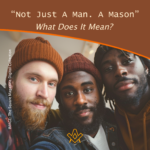 “Not Just A Man. A Mason”: What Does It Mean? Embrace the profound essence of Freemasonry, not merely a group but a journey of integrity, shaping men of dignity. By adopting virtues such as honesty, justice, and brotherly love, Freemasonry transcends time, urging us towards a dignified life. It’s more than being a man; it’s about living with unyielding dignity. |
 Multiculturism and the Culture of Freemasonry Freemasonry, with its deep roots in universal principles such as individual freedoms, education, and the pursuit of science, stands as a beacon of unity in a world divided by conflicting ideologies. By embracing the tenets of Freemasonry, including respect, peace, and mutual understanding, we can navigate societal challenges and foster a more harmonious world. |
 Embrace the new paradigm of eco-conscious living in the 21st century. Freemasonry, a cornerstone of society, must evolve, placing Nature at its heart. Reject anthropocentrism, embrace deep ecology, and champion sustainable living and global cooperation. Let Freemasonry lead by example, advocating for a world where humans and nature coexist harmoniously. |
 How Freemasonry Has Woven Itself into the Fabric of Society Like the weathered stones of an ancient temple, Freemasonry's origins are shrouded in mystery. This fraternal order has woven invisible threads throughout society's fabric since emerging in the 1600s. Despite declining membership, Freemasonry's influential legacy endures, seen in philanthropy, architecture, and the ideals of legendary members. Though facing challenges, revival remains possible if it adapts traditions to the modern era. |
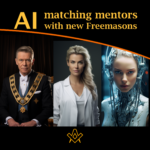 AI help in matching mentors with new Freemasons Harnessing AI for Freemasonry Mentorship: A Comparative Analysis. Freemasonry, an age-old fraternity, seeks to enhance its mentorship program by leveraging AI. While the Grand Master suggests detailed member profiles for matching, a Professional Coach emphasizes personality compatibility. Meanwhile, an AI Bot proposes machine learning for pattern recognition. Dive in to explore the potential and pitfalls of each approach. |
 Masonic Charities P.2 – The Shriners Discover the Shriners' legacy within Freemasonry; delve into their profound commitment to philanthropy and see how Masonic Charities demonstrate brotherly love, relief, and truth. Become inspired by the bonds that unite Shriners around the globe and their impactful work in local communities. |
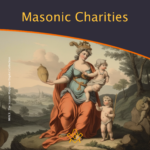 Freemasonry's commitment to charity has always been a priority and remains a core principle, reflecting its mission to promote brotherly love, relief, and truth in the world. Part 1 of the series gives an introduction to the establishment of the main Masonic Charitable endeavours in the 18th and 19th centuries and several key influencers. |
 Solomon Learning and Development Platform The Intersection of Freemasonry and Technology: Embracing the Digital Age with the New |
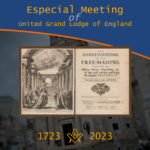 Especial Meeting of United Grand Lodge of England The year 2023 marks the tercentenary of the publication in London of the Constitutions of the Freemasons, based on Enlightenment principles that provide the philosophical foundations of modern Freemasonry. Why are the 1723 Constitutions important? Many Masonic histories have been concerned with ‘when’ and ‘what’. We also explore ‘why?’ |
 Like every other incident of initiation it is in the light of the larger meanings of Freemasonry that we must interpret the Rite of Destitution. But what does it mean? |
 Society of Grand Lodges in Alliance (SOGLIA) is a confederation of Grand Freemason Obediences in which all members obey the principles of Regularity. Assembled annually, in different places of the world, in order to share fellowship and to promote Masonic tradition, SOGLIA members are respecting the autonomy of each Grand Lodge. |
 Confederation of the Grand Lodges of Europe and the Mediterranean - Universal Freemasonry and its intellectual property are less and less taken into account in the current times of constant movement and unclear future prospects. |
 The Book of Law in Brazilian Freemasonry We are informed that, Freemasonry it is not a religion, but the candidate has a belief in a creative principle, which later, we call the Great Architect of the Universe. - by Fernando Rodrigues de Souza |
 Mike's Masonic Walks And Talks WBro. Mike Neville is a Masonic author and lecturer. He offers walks and talks primarily around London, based on his vast knowledge of the area and his specialist subjects, which cover all aspects of Masonic history. |
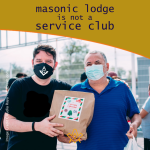 A Masonic lodge is not a service club An address delivered to the 10th Annual Conference of Western Canadian Grand Lodges (1950) in response to the question, "Should Our Western Grand Lodges Sponsor a Specific Program?" By |
 The Order of Bees was established as a youth initiative for the boys and girls of Prince Hall Freemasons, and symbolises the relationship existing between the activities of the youth and the family of bees. |
 The Confederación Masónica Interamericana (CMI) was founded in 1947, is a non-profit organization that groups together 92 Great Masonic Powers, admitted as members and distributed in 26 countries in South, Central, North, Caribbean and Europe. |
 This smartphone app is designed to work with all Freemasons from both Regular and Independent Grand Lodges around the world. |
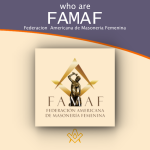 The American Federation of Feminine Freemasonry (FAMAF) is an organization that brings together Grand Lodges, Grand Orients and Confederations of Feminine Masonic Grand Lodges from the American continent. |
 The third largest Masonic Alliance of independent grand lodges, which currently has over 500,000 members in the world and an incredible resource of "good people with a good reputation" from around the world. |
 A Guiding Paw - my faithful 'brethren' A heart-warming story of one Mason's best friends – and how Gary's faithful guide dogs have helped fulfil both his Masonic life but also his valuable work in public service. |
 A visit to the Mother Lodge of Scotland Let me take you to the heart of Scotland to meet our Brethren of the Mother Lodge of Scotland, a journey into one of Freemasonry's deepest roots. Our guide Carlos Oliveira Santos who is from |
 An introduction to VEREINIGTE GROSSLOGEN von Deutschland / UNITED GRAND LODGES of Germany |
 International Masonic Union CATENA An international association of Grand Lodges and independent Lodges, with all true Masonic traditions, which adhere to the basic principles of the equal standing of men and women in Freemasonry |
 Social Impact of Prince Hall Freemasonry in D.C., 1825-1900. Alonza Tehuti Evans discusses Prince Hall Freemasonry, founded by African Americans. |
 Who are the Widows Sons, and what do they do, and how can you join ? |
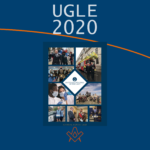 For the first time in its 300 year history UGLE has published an Annual Review |
 Founded in 1919 and named after the Grand Master of the Knights Templar, this International Order has helped young boys become great men. |
 9th International Conference of Freemasonry Hidden Meanings: Esotericism and Masonic Connections |
 An introduction to CLIPSAS and we look at who are they and what do they do |
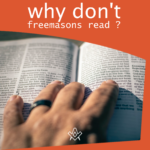 The title of this article will seem somewhat of an oxymoron, because at this precise moment you, most likely a Freemason, is reading this |
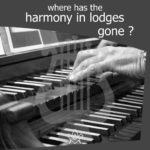 Music can make you either remember everything or forget everything! They even call it the 'rhythm' of life because life does have a beat, a rhythm, a song! Music is equally important for Freemasons. |
 Young Masons' Inter-Club Virtual Social An initiative was created to initially keep Brethren engaged in their Masonry whilst the restrictions of the COVID-19 pandemic are in place. |
 I've heard people say that we don't have heroes |
 What can we learn from Steve Jobs' address given at Stanford in 2005 |
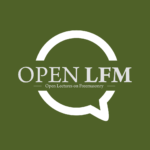 Open Lectures on Freemasonry as a series of monthly online lectures that aims to increase the visibility and accessibility of research into Freemasonry. The lectures are open to anyone who is interested. |
 What Kind of Library Do You Have? Many Brothers have no clue as to what kind of "Craft" library they actually have in their home or office. Most of these Brothers don’t care that they don't know – so, what kind of library do you have? |
 Russian Freemasonry a combination of a short sketch of its history and a review of the present-day Masonic landscape in this country |
 A brief outline showing the differences and similarities within Freemasonry |
masonic knowledge
to be a better citizen of the world
share the square with two brothers

click image to open email app on mobile device
Tubal Cain
Masonic Apron NFT
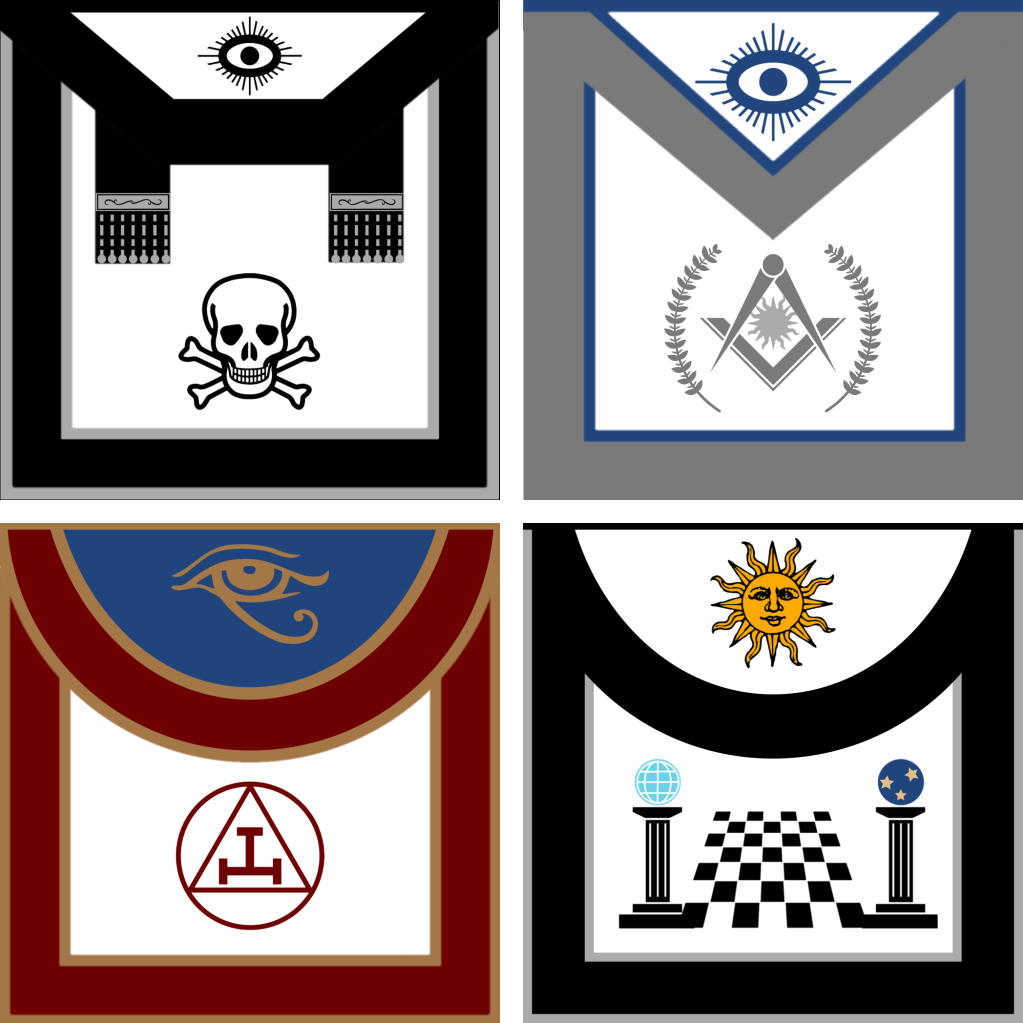


Each NFT includes the JPEG image plus a full size masonic apron and shipping worldwide
